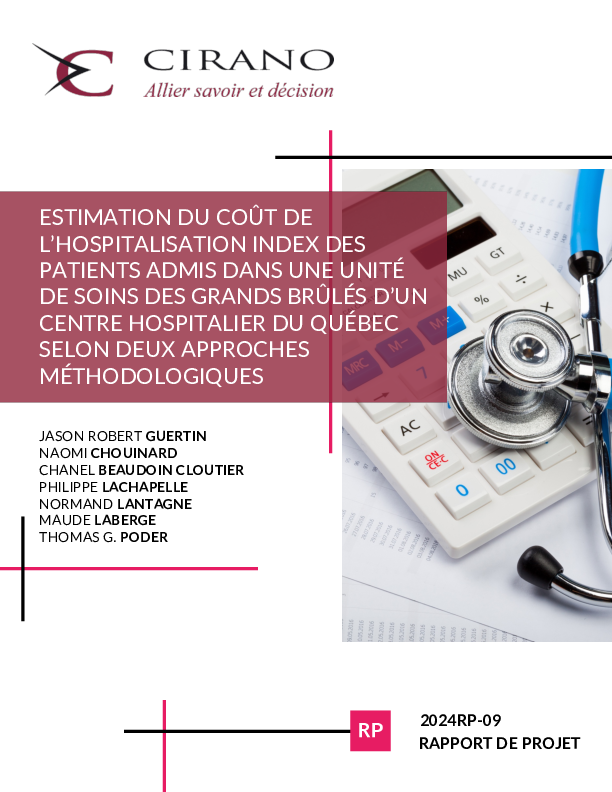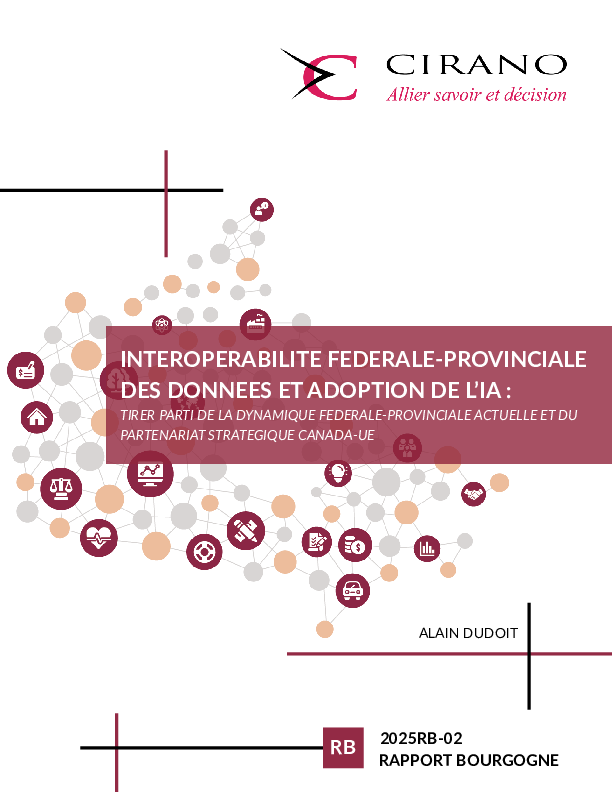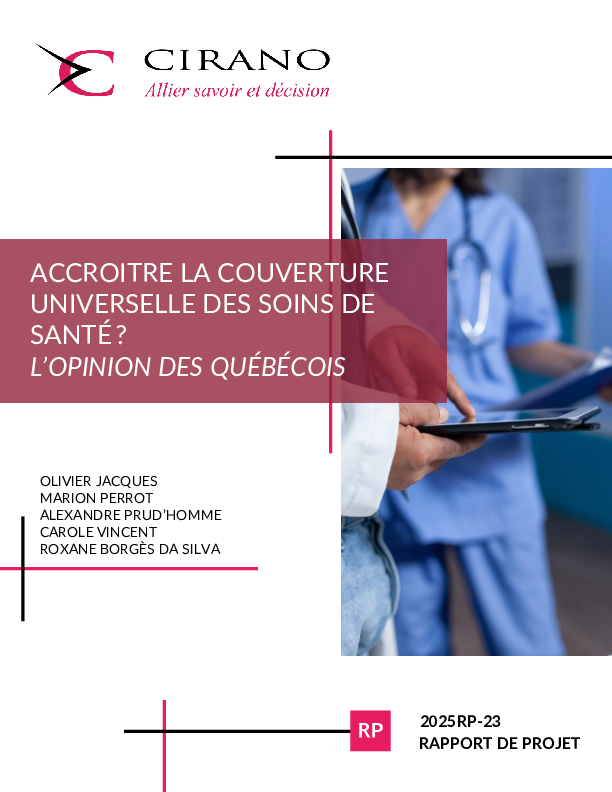Estimation du coût de l’hospitalisation index des patients admis dans une unité de soins des grands brûlés d’un centre hospitalier du Québec selon deux approches méthodologiques
Severe burn injuries are recognized as being among the most severe in terms of morbidity and mortality that an individual can experience. Given the nature of the hospitalization and care required, these hospitalizations are recognized as some of the most expensive in the healthcare system. Healthcare cost analyses are used to quantify the monetary value of the resources used during an episode of care. Historically, in Quebec, the approach based on the relative intensity level of resources used (NIRRU) was the most frequently used when examining the cost of a hospital stay. A new method has recently emerged, based on the Cost per Care and Service Path (CPSS). Using data from the CHU de Québec-Université Laval's Centre de valorisation et d'exploitation de la donnée (SCIENTA) on 362 index hospitalizations for severe burn trauma, the authors show that the average direct costs estimated using the CPSS approach are 73% higher than those obtained using the NIRRU approach. However, it is not possible to determine which of the two estimates is closer to the actual cost. Therefore, it is not possible to rule out the risk that the differences observed between the costs estimated according to the two methodological approaches are specific to the populations and conditions studied.




